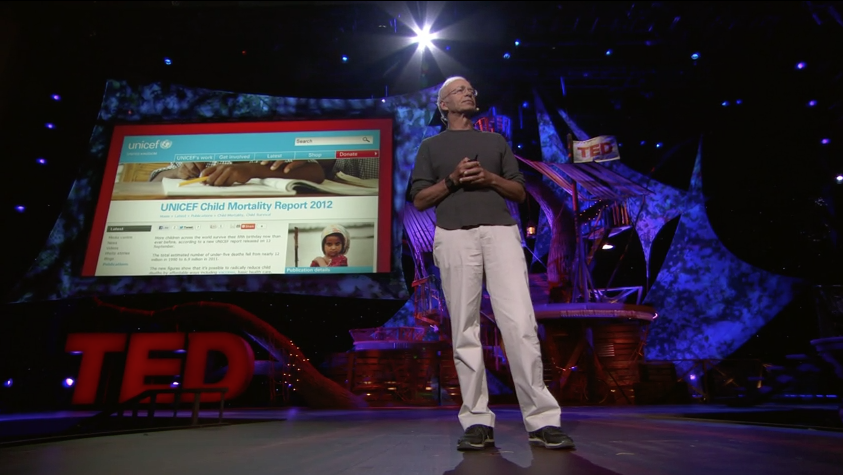In a previous piece, I argued that concerns about a potential child’s future carbon emissions do not give us any good reason to have fewer children. My basic argument there was simple: while a human life causes some harm via carbon production, it also causes far more total good. Human lives are, on net, a good thing for the world.
But while I don’t find the carbon cost argument persuasive, there is a different argument against having kids I find much more convincing.
Had I stayed single throughout my whole life, I expect I could have done a lot of good. Were I to eventually secure a good job — which I expect I will eventually do — then, with only myself to support, I could have donated a lot of money to high-impact charities.
I don’t have expensive tastes, and in the past I always found it easy after I receive a raise to mostly maintain my prior standing of living and funnel my new income to those in need. (To be clear, this is not because I’m a particularly generous person; I just don’t really buy much stuff. For example, I have a terrible time coming up with things for people to buy me for Christmas even when I know the money won’t otherwise be donated.) Had I not married, I expect that over the course of my life I could have easily donated well more than 50% of my income to those in real need.
But instead I got married and plan to have kids. And this, I expect, means I will do less good for the poor.
That is because kids are expensive. The USDA estimates that raising a child costs over two hundred thousand dollars (not including college). That is money that I could, and probably partly would, have spent providing malaria nets to families in Africa or funding vitamin A supplements.
This objection to having kids, what Stuart Rachels calls the “Famine Relief Argument,” is powerful. It points out that while the direct costs of having a child are not very high (my child will probably not make the world a worse place), the opportunity costs of having a child are huge. If one can save a life by donating about three thousand dollars to high-impact charities, then for the amount of money the average American spends raising a kid, I could save almost one hundred lives.
Of course, I could be more frugal than the average American parent (and do hope to be). But even living frugally, having kids will substantially increase my essential expenditures.
An Uncomfortable Demandingness
This argument is extremely strong, but you don’t see it brought up very much.
I’ve seen far more people on Facebook mention climate costs as a reason not to have kids than mention opportunity costs. Every couple months we see a new news article asking whether climate change should make us rethink procreation. I don’t see similar news articles about if global poverty should make us rethink procreation (other than those occasional very confused articles that suggest that poverty might be a result of overpopulation). There is a whole BirthStrike movement of women refusing to have kids until progress is made on climate change. Why is there not a BirthStrike movement of people refusing to have kids till we’ve eliminated global poverty? Why is more attention paid to the climate costs of having children, rather than the much, much larger opportunity costs?
It’s always dangerous to try and guess at underlying psychological motivations. But I expect two things are in play.
First, we never see opportunity costs. We see the damage our actions do but are never viscerally confronted with the goods we forgo by not performing certain actions. Thus, our brains are much better at considering costs other than opportunity costs.
Second, once you begin factoring in opportunity costs you suddenly realize just how radically demanding your ethical duties are. If I don’t have a child, I can donate far more money to charity. But also, if I give up philosophy and become a lawyer, doctor, or computer programmer, I can probably make far more money to donate to charity. Am I required to give up the career I love to help the poor?
Americans spend over 10,000 dollars per child on average each year. But Americans also spend over 3,000 dollars each year eating out. And the good of eating out is surely at least three times as small as the good of a child’s life. Are we doing something wrong anytime we eat out at restaurants?
Part of the reason you don’t see the opportunity cost argument made very often, is because making the opportunity cost argument forces you to confront the extraordinarily demanding nature of justice.
Responding to the Argument
Are there any plausible responses to this argument?
You could deny that ethics is really all that demanding. Perhaps your money really is yours, not just in the sense that you have the right to decide how it is used, but in the sense that you don’t have any moral reasons to use it to help others.
But, I’m convinced this is wrong. It really is wrong to spend money on luxuries when you could be donating that money to effective aid organizations. So are there any considerations that might justify having kids, even if they would not justify eating out or buying a new car?
Maybe. If there are, I think they come down to the special sort of value involved in a human life. The value of a child is very different from the sort of value involved in going to a restaurant, buying a new car, or taking international vacations.
All four (children, restaurants, cars, and vacations) are luxuries in the sense that they are not things that we need. Thus, you might think that since there are others who need food, shelter, clothing, and medication, it would be unjust to acquire those luxuries.
But there is also this important difference. If it was unjust to buy the car, it is obviously also unjust to keep the car. If I don’t need the car, not only should I not have bought it, but now that I have it I should sell it and donate the money to the poor.
But the same is not true of a child. Once I have a child, I should not sacrifice that child even if it means I can donate more to charity. Why is that? Because the value of a human life is profoundly different from the value of a car. Cars have a fungible value. It makes sense to trade one car for another, or to exchange one car for a certain amount of food.
Human lives are different, as is clear when we consider the unique type of tragedy involved in a human death. Consider how the point is put by Tal Brewer:
“Human beings have a very distinctive kind of value, wholly unlike the value of a physical pleasure, or a pocket full of money. It can make perfect sense to trade off physical pleasures against each other, foregoing one so as to experience another that differs only in being longer and more intense. … The loss of a human being is not compensable in this sense by the creation or preservation of another human life. This is not to deny that it sometimes makes sense to choose a course of action that will lead to the foreseeable death of one person but will spare the lives of many others. It is only to deny that in the wake of such a choice, it would make sense to regard the lost life as compensated for without remainder—indeed, without a literally grievous remainder—by the fact that other lives have been spared. This is precisely the blindness at the heart of utilitarian conceptions of value. …
It is worth pausing for a moment over the enormity of what we are referring to when we say such things as that the loss of human life cannot be compensated without remainder. … What is at issue here is that which we cannot or at any rate won’t quite believe in the possibility of when we struggle to fathom the fact that someone no longer is: it is an unfillable absence, a sense of which opens like a fresh wound when we turn our thoughts to the person who has been lost.
… For example, mature grief at the death of a loved one involves an awareness, whether articulate or inarticulate, that nothing could represent a compensation for what has been lost. Consolation might be possible, but compensation is not.
When we seek to stretch ourselves towards a fuller appreciation of the badness involved in the death of strangers, we often remind ourselves that the deceased was someone’s son, someone’s best friend, someone’s lover. … This familiar discipline of vision, then, testifies to a widespread confidence that the value of human beings is seen more clearly through the eyes of love than through the aggregative arithmetic of the utilitarian or the bureaucrat.”
Of course, the choice to not have a child is different from the choice to let a child die. To let a child die is monstrous, it is not monstrous to not have a child.
But even if this does not show there is any obligation to have children, I do think this should give us reason to doubt that we are obligated to not have kids in order to donate more to charity. A human life has a type of value totally different than that of a car — it is a life with its own sort of incalculable meaning and importance.
And because of that unique value, it is unclear to me if it makes sense to make the sort of comparison required to say that it is more important to donate to charity than it is to have a kid. I worry such a comparison misunderstands the unique kind of value possessed by each and every human life.







